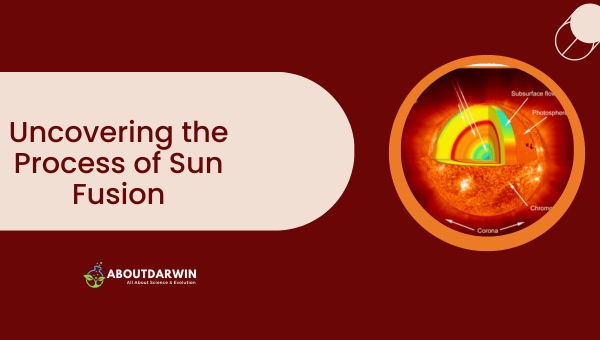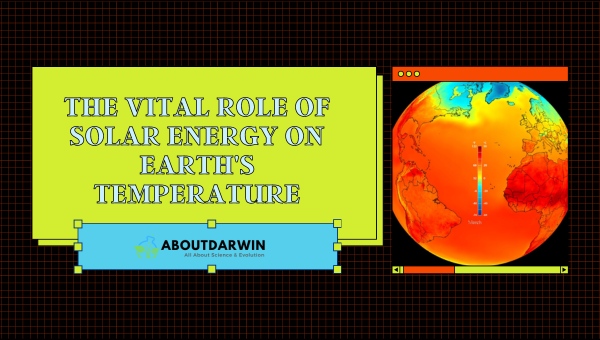Physical Address
304 North Cardinal St.
Dorchester Center, MA 02124
Have we ever wondered how our magnificent Sun keeps Earth toasty? At the heart of it all is a process called sun fusion. Simply put, this is how the Sun generates heat and energy, ultimately warming our planet and making life possible.
In the Sun’s core, hydrogen atoms merge under extreme pressure and temperature to form helium through nuclear fusion. This reaction releases an insane amount of energy in the form of light and heat, traveling about 93 million miles to reach Earth. Once here, solar energy is absorbed by our atmosphere, oceans, and landmasses, creating the perfect conditions for life as we know it.
But it’s not just about keeping us warm. Sun fusion is also the driving force behind weather patterns, ocean currents, and even the natural rhythms of plants and animals. Without this celestial powerhouse, life on Earth would be unimaginable. So next time you’re basking in the sunshine, remember the incredible process it took to bring that warmth to you.
Contents
I’ve always been captivated by the enormity and heat of our life-giving star, the Sun. To better understand how it heats the Earth, it’s essential to delve into the process of sun fusion. By studying this astonishing natural phenomenon, we can gain valuable insight into various aspects of solar energy and our planet’s climate system.

Sun fusion refers to the nuclear reactions inside the Sun’s core, where hydrogen atoms are continually converted into helium atoms. This process, known as nuclear fusion, powers the Sun and releases an immense amount of heat and energy in the form of light and radiation. This energy traverses the vast distances of space, providing Earth with the warmth and light necessary to sustain life.
To comprehend the mechanics of sun fusion, we need to consider the conditions within the Sun’s core. With temperatures approximating 15 million degrees Celsius and a pressure of around 250 billion atmospheres, the Sun’s core provides the perfect environment for nuclear fusion.
The process involves merging hydrogen nuclei to create helium, which simultaneously results in the release of energy in the form of sunlight.
| Element | Core Temperature | Core Pressure |
|---|---|---|
| Hydrogen | 15 million °C | 250 billion atm |
| Helium | (the result of reaction) | (the result of the reaction) |
Some key aspects of sun fusion include:
The study of sun fusion lends valuable information for understanding our planet’s energy and climate systems. As our knowledge of this process grows, so does our ability to harness solar energy.
Sun fusion is the process that powers our home star and provides the essential heat that sustains life on Earth. As an expert blogger on this topic, I’ll take you through some important ways solar energy contributes to Earth’s temperature.

Solar radiation is the primary source of heat for our planet. It penetrates the Earth’s atmosphere and is absorbed by land, oceans, and the air. The absorbed energy warms the planet, maintaining temperatures that support life. Specifically, around 70% of incoming solar radiation is absorbed, while the remaining 30% is reflected in space.
To outline the distribution of solar radiation, let’s examine some critical data:
| Absorption | Component | Percentage |
|---|---|---|
| 30% | Earth’s Surface | 51% |
| 20% | Atmosphere | 20% |
| 20% | Clouds | 29% |
| The table outlines percentages of solar radiation absorbed by various components. |
Regarding our climate, solar energy plays a fundamental role in creating weather patterns. It fuels the wind, drives evaporation, and creates temperature differences that set the stage for various weather phenomena. Some key effects include:
Another essential aspect of solar energy’s impact on Earth’s temperature is how it influences the seasons. The Earth’s axial tilt of about 23.5 degrees means different parts receive varying amounts of direct sunlight throughout the year. As the Earth orbits the Sun, this leads to the characteristic temperature shifts we associate with seasons, affecting environmental conditions and biodiversity.
Furthermore, solar energy plays a crucial part in the carbon cycle, a natural process that helps maintain the balance of greenhouse gases in Earth’s atmosphere. Photosynthesis, driven by sunlight, allows plants to convert sunlight into chemical energy, during which they take in carbon dioxide and release oxygen. This process plays a significant role in regulating Earth’s temperature and climate.
In short, sun fusion and solar energy are essential to understand Earth’s temperature, climate, and the diverse life it supports. By appreciating the interconnected processes that rely on solar power, we can better recognize its crucial role in our planet’s intricate web of life.
It’s evident that sun fusion plays a vital role in heating Earth. The underlying process, involving nuclear fusion within the sun’s core, emits immense energy through light and heat. This energy then travels to Earth, warming up our planet and supporting the diverse life forms that call it home.
Upon reaching Earth, the sun’s energy is absorbed and released in various ways:
The balance between these absorption and reflection processes helps maintain the Earth’s temperature within habitable ranges, allowing life to thrive.
| Process | Amount of Absorbed Energy | Percentage |
|---|---|---|
| Earth’s Surface | 168 Watts per square meter | 48% |
| Reflection to Space | 107 Watts per square meter | 31% |
| Weather and Climate Systems | 77 Watts per square meter | 22% |
By understanding sun fusion and its effects on Earth, I hope to shed light on the incredible power of our closest star. The sun’s energy provides us with warmth and supports the intricate and delicate ecosystems that make life on Earth possible.